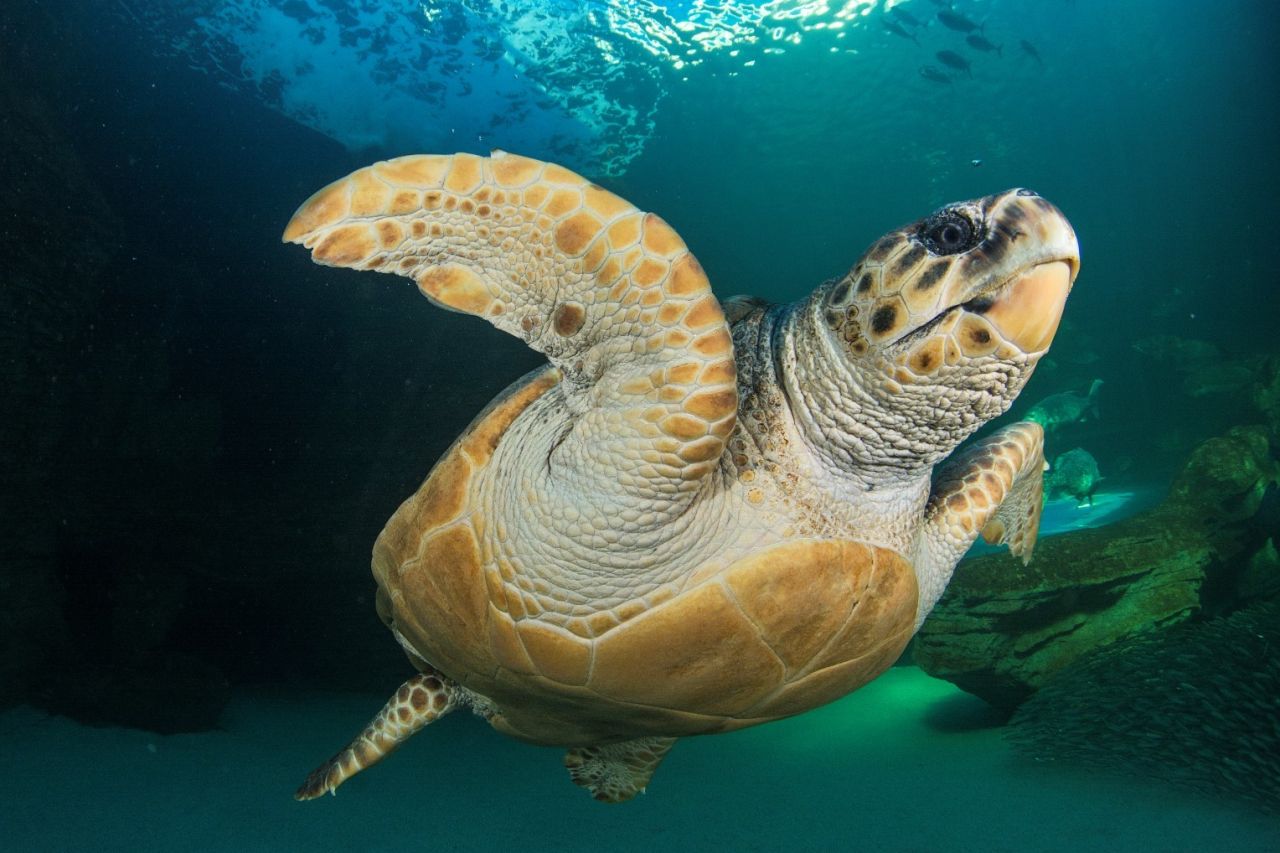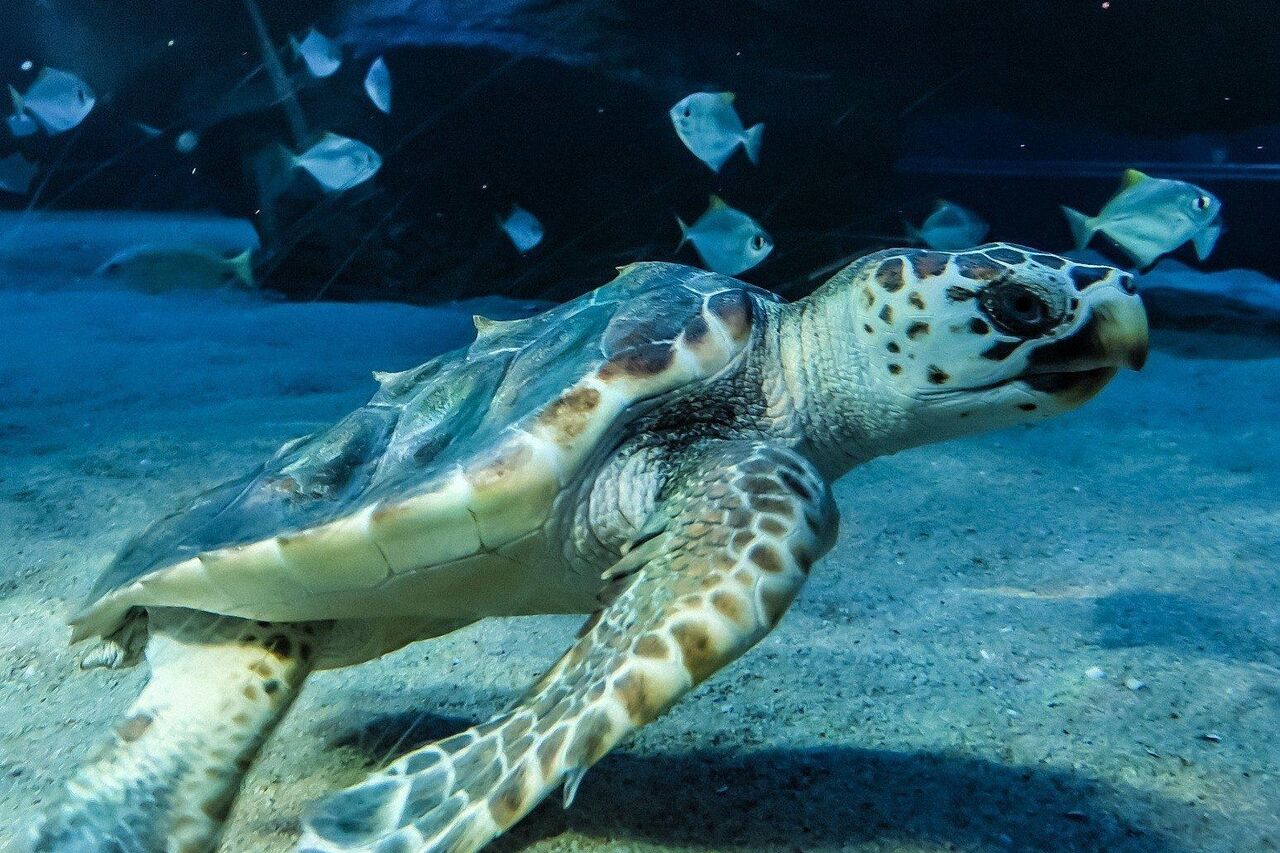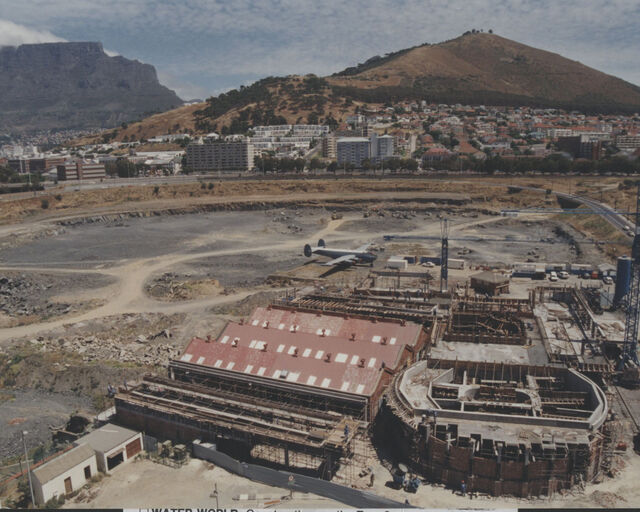Why are there turtles in the I&J Ocean Exhibit?
Visitors to the Two Oceans Aquarium may not realise that the I&J Ocean Exhibit plays a central role in the work of the Two Oceans Aquarium Foundation’s Turtle Conservation Centre! At any given time, at least one turtle can be seen in the exhibit. The I&J Ocean Exhibit only houses these turtles temporarily – they are there for a specific purpose: Rehabilitation.
The Turtle Conservation Centre is dedicated to rescuing, rehabilitating, and releasing injured and stranded turtles. Often, the TCC rehabilitates sub-adult and adult turtles. These turtles usually display extensive external physical injuries, from boat strikes or entanglement in ghost fishing gear. Many suffer from plastic ingestion, too. As a result, the rehabilitation journeys of these turtles are often longer and more difficult than those of the hatchlings.
Towards the end of their rehabilitation journeys, many of the sub-adult turtles in the care of the Turtle Conservation Centre team are introduced to the I&J Ocean Exhibit. This is called a “soft release”.
What is a soft release?
In our case at the Turtle Conservation Centre, a soft release means that the turtle undergoing rehabilitation is introduced to the I&J Ocean Exhibit at the Two Oceans Aquarium.
A “soft release” allows wild animals to gradually become acclimatised to a new environment before they are released into the wild – this usually happens after a period of rehabilitation. A soft release also prepares the turtle for its eventual release, reducing stress and impacting the turtle’s consequent success in readjusting in the wild.
This move allows them time to gain strength, engage in natural turtle behaviours, receive enrichment activities, and be observed. This is a crucial part of their rehabilitation journey, during which our turtle team ensures that each turtle is as prepared as possible for release into the ocean. Just like humans need some time to recover after illness, turtles also need to regain their strength and fat reserves after a long rehabilitation.
This is especially important given that turtles are pelagic for a large portion of their lives. In the case of the turtles undergoing rehabilitation with the Turtle Conservation Centre, they may need time to recover from surgeries or other more serious treatments.
When is a turtle ready for soft release?
Our veterinary team evaluates when each turtle is ready for a soft release into the I&J Ocean Exhibit. This is dependent on several factors and is often done on a case-to-case basis.
Firstly, the turtle must be over a certain size, which is specific to their species and age. This is because the other species in the Exhibit, such as the musselcrackers, may pick on smaller turtles!
For some turtles in active rehabilitation, a move to the I&J Ocean Exhibit allows the team to evaluate and treat issues such as buoyancy or strength. Other yardsticks are overall health, improved appetite, and increased energy – the turtle team observes and feeds the turtles every day, so they can gauge when each is ready for a bigger space.
The soft release into the I&J Ocean Exhibit is also an excellent opportunity for the turtles to exercise – being released into the ocean requires strength and stamina, which they can build up in the larger exhibit space.
Turtles who spent time in the I&J Ocean Exhibit before being successfully released...
Related News
Sign up to our Newsletter
Receive monthly news, online courses and conservation programmes.






